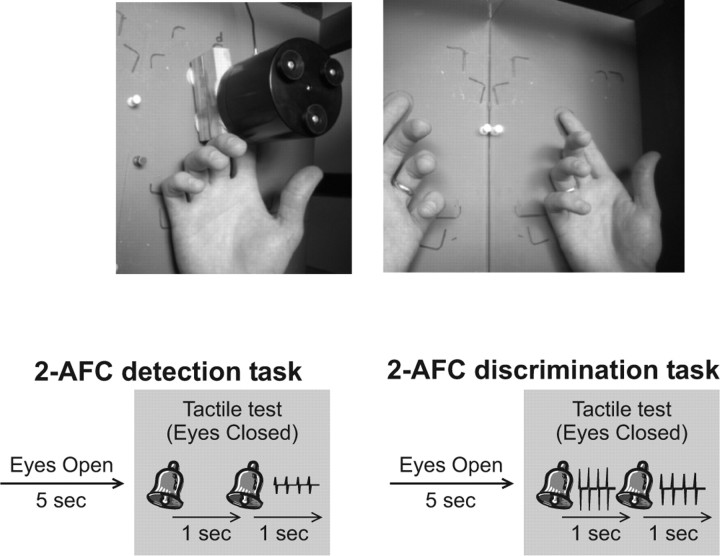Figure 1.
Top, Photographs showing the experimental setup. The participant's right hand was placed inside a box with the index finger extended to be in contact with the vibration device (left). During experiments 1–4, the right hand and device were concealed from view by a mirror; the mirror either reflected the image of the participant's left hand to appear as the right hand (as shown on the right) or was turned around to create an opaque surface (not shown). In experiment 5, the participants either had direct view of their right hand (and stimulator) or these were concealed by a curtain. Bottom, Diagrams depicting trial structure for the two-alternative forced-choice (2-AFC) detection and discrimination tasks. On each trial, the participants reported which of two temporal intervals, signaled by two auditory cues, contained a vibration (detection task), or which interval contained the stronger of two vibrations (discrimination task).

